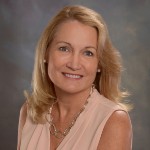- Cahill Announces Julie L. Cohen as Firm’s First Chief Marketing Officer
- Jennifer Wallace, Chair of SFNet’s 40 Under 40 Awards, Encourages Members to Nominate Rising Stars
- Gordon Brothers Completes Big Lots Purchase & Facilitates Going Concern Sale
- eCapital Acquires LSQ to Expand Technology Solutions and Strengthen Market Leadership
- Interview with Kristin Maxwell, Member of SFNet’s Inclusiveness Committee
SFNet 75th Annual Convention Delivers Latest Insights on Secured Finance Strengths and Pressures
By Susan Carol
The SFNet 75th Annual Convention began with a frigid run benefiting the Madison Square Boys and Girls Club and a very warm reception at 30 Rockefeller Center sponsored by ExWorks Capital and RedRidge Diligence Services. The famous tree wasn’t lit, but party goers enjoyed a close-up view of the Rockefeller skaters.
From the start, session rooms filled quickly – some with standing room only. After hearing from keynoters about a new world order unfolding and the potential for a recession (which most agreed is not immediately around the corner) nearly 1,000 attendees tuned in to speakers providing context for the latest industry data, insights into investor strategies, and examples of ways specialty finance companies are diversifying or preparing for challenges ahead.
SFNet’s Market Sizing Study accurately reflects what is going on in the markets, said Robert Rubino, president of CIT Bank, N.A., and head of commercial banking for CIT. “The new norm is growth,” he said. This opening panel provided a market overview, described the current market as “hyper-competitive,” and noted that asset-based lending (ABL) syndicated markets are robust and aggressive with 13 percent year-over-year growth.
A panel tailored to banks, moderated by Peter B. York, managing director of JP Morgan Securities, LLC, pointed out that deal sizes are getting larger and “hold levels” suggest there is plenty of demand in the system. The panelists also saw room for ABL and “ABL Lite” structures to take share from traditional C&I loans.
At the same time another track for independents urged attendees to stay relevant, be aware of developments taking place in the outside world and think about how fast they want to scale. The potential impact of the London InterBank Offered Rate (LIBOR) ending and new interest rate floors were presented as important considerations. It was also noted in another session that new technology is making it easier for finance companies to expand globally and better manage risk.
During the three-day conference, some live polling found attendees do not expect the industry to contract in the coming year and they think the most likely industry disruptors to be trade wars/tariffs and technology.
In a session on private debt, the panelists were asked about their forecasts for a recession. Randy Schwimmer, senior managing director and head of origination and capital markets for Churchill Asset Management, said he would welcome a mild recession, but “the biggest surprise would be that we’ll be at this same point next year….” Even with market corrections, others pointed out that ABLs are well defined, less volatile than commercial and industrial (C&I) and countercyclical, and that ABL could grow despite a downturn.
Schwimmer also noted that commercial lending is mature and there is considerable incoming capital. However, it will be important to differentiate to remain competitive. The panelists said some are diversifying their products because they don’t want to compete solely on pricing, or they are growing through acquisitions. Others are concentrating on delivering transactions faster.
In a session on private equity (PE) trends, Scott Hendon, international liaison partner, Global Private Equity, BDO, said an annual survey his company conducted found 80 percent of PEs expect a market correction in the next 12-24 months. He added that PEs are already being more selective facing higher risks, though there is still a lot of “dry powder.”
Speakers who covered scenarios in which ABLs and leveraged loans come together observed that just the fear of recession is already having some impact.
Keynoters pointed to changing demographics, not just in the United States but worldwide. There are aging populations, new perspectives on what will contribute or hamper growth, and new global relationships forming.
Peter Zeihan, an expert in geopolitics who studies how place impacts financial, economic, cultural and political developments, said millennials are important to the future because they represent consumption, while the baby boomers, who will mostly be retired by 2022, are saving or preserving resources.
To understand world power shifts, he said one must study population changes, look at who controls the seas, and examine differing consumption levels as well as wedge issues like energy, automation and currency. He pointed out that Mexico will become an important trading partner because its population is ripe for consumption and Japan should be observed for being “best in automation.”
Japan was mentioned again in the keynote lunch session as a country that is embracing Modern Monetary Theory (MMT), the concept that government deficits are not a real problem. In fact, Japan has carried debt for years and is growing, Stephanie Kelton, an economist and authority on MMT, said, noting it is a practical way to foster growth because it creates more spending and our economy can absorb it. A counter argument by Marci Rossell, former chief economist of CNBC and co-host of Squawk Box, was that “deficits that may not bother us now, may bother us in 10 years” when the demographics have significantly changed. The lively exchange was moderated by Jill Schlesinger, a CBS business analyst, who noted that American leaders representing both political parties have for decades warned that deficits would threaten economic well-being.
Dr. Robert Wescott, president of Keybridge, noted that at a recent annual meeting of IMF and World Bank, financial leaders warned there will be a “softening of investment and trade volumes in an environment of persistent trade winds.” He said the global economy appears to be headed for a “protracted period of subdued growth.”
Some of the sessions dove deeper into business practices and changes ahead.
On the subject of debt products and covenants, panelists noted that everyone is having conversations that will affect structures, and that Convent Review in January launched a documentation scoring system for deals over $250 million that scans for factors that might help predict defaults.
In another session on who is buying and selling finance companies, Tim Stute, managing director & head of Specialty Finance, Hovde Group, LLC, reported that valuations have been good over the last few years and there are a few dozen banks interested in specialty finance companies. The panel said investors are investigating companies deeply, so it will be important for sellers to be as forthcoming as possible. This panel reported it is not just banks, but that there are others seeking the higher yields possible in specialty finance, e.g., BDCs, credit funds and other acquisitive finance companies and private equity funds.
Meredith Coffey, executive vice president of the Research Load Syndication & Trading Association, discussed the replacement for LIBOR (the current bank reference rate for $300 trillion in goods), which is expected to end in 2021. The new SOFR, she said, will provide a secured overnight financing rate, but there are five variants to be understood.
Rich Goldman, director of legal operations, Xtract Research, Debtwire, said in a session on financing for Chapter 11 debtors that they are seeing more “novel” fees entering into debtor in possession (DIP) lending transactions, as well as “back-stop” fees. He noted that 61 percent of the transactions are roll-ups, mostly in retail cases, but not so much in the oil and gas sector. The Honorable Christopher S. Sonchi, chief judge of the United States Bankruptcy Court for the District of Delaware, contributed with some real-life examples, and noted that most of the DIP rollups are not problematic.
The underlying fabric of the three-day program this year, no matter which sessions were attended, was the practical value of having the robust data that SFNet has compiled and packaged in 2019, including its market sizing study done in conjunction with EY, quarterly market data compiled by Westat, and a new Market Pulsereport created by Keybridge and published by the Secured Finance Foundation that served as the basis for an “economic townhall” conducted by Dr. Wescott, of Keybridge, on the last day of this event.



